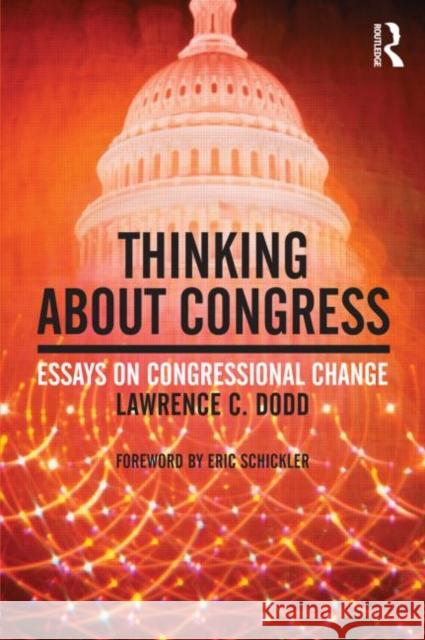Thinking About Congress: Essays on Congressional Change » książka
Thinking About Congress: Essays on Congressional Change
ISBN-13: 9780415991568 / Angielski / Miękka / 2011 / 398 str.
Thinking About Congress: Essays on Congressional Change
ISBN-13: 9780415991568 / Angielski / Miękka / 2011 / 398 str.
(netto: 157,25 VAT: 5%)
Najniższa cena z 30 dni: 89,25
ok. 22 dni roboczych
Dostawa w 2026 r.
Darmowa dostawa!
Observing the polarized, debilitating politics of today's Congress, one wonders whether change is possible on Capitol Hill. In Thinking about Congress, Lawrence Dodd reminds us that Congress seemed equally intransigent at times the past, yet change and rejuvenation came. Reading his classic essays, one sees Congress move from Committee Government in mid-twentieth century to Liberal Democratic reforms in the 1970s to the 1994 Republican Revolution to Party Government today. Simultaneously, one proceeds with Dodd to an ever-deeper understanding of the dynamic character of Congress. Across forty years of watching paralysis give way to change, Dodd crafts a theory of congressional cycles - essay by essay - that explains why Congress evolves. However permanent periods of intransigency appear, the theory argues, they can and do give way to growing concern by legislators and parties for the collective public-interest; to citizen demand for change generated by social crises; and to innovative ideas about politics and policy. With these developments come policy breakthrough, institutional renewal, and enormous social progress. A rare book, Thinking about Congress holds out hope for the future while illuminating both the process and object of inquiry.
In the mid-1970s, just when Congress seemed static and incapable of rejuvenation, the institution experienced an unexpected and transformative change. What accounted for this dynamic process and continues to explain other more recent upheavals and waves of reform?
This volume charts the thinking of scholar Lawrence Dodd in his development of theoretical explanations for Congressional change over time--explained by members' pursuit of power, institutional and electoral contexts, clyclical rhythms, social learning, and polarization within society. Dodd's power cycle theory, modeled here as a dynamic act of theory development itself, takes shape to define an organizational cycle, an electoral cycle, and a learning cycle in Congress.
Dodd also begins to explore here for the first time a fourth dimension of change, highlighting the possibility that the very act of Congress's transformative change and issue responsiveness may bring with it unseen and yet deep structured dangers that threaten the cyclical resilience of Congress. By showing an evolving multi-dimensional theory of Congressional change in process from essay to essay, this book demonstrates the act of theory building, legitimizing this sustained form of empirical political inquiry in its own right.











